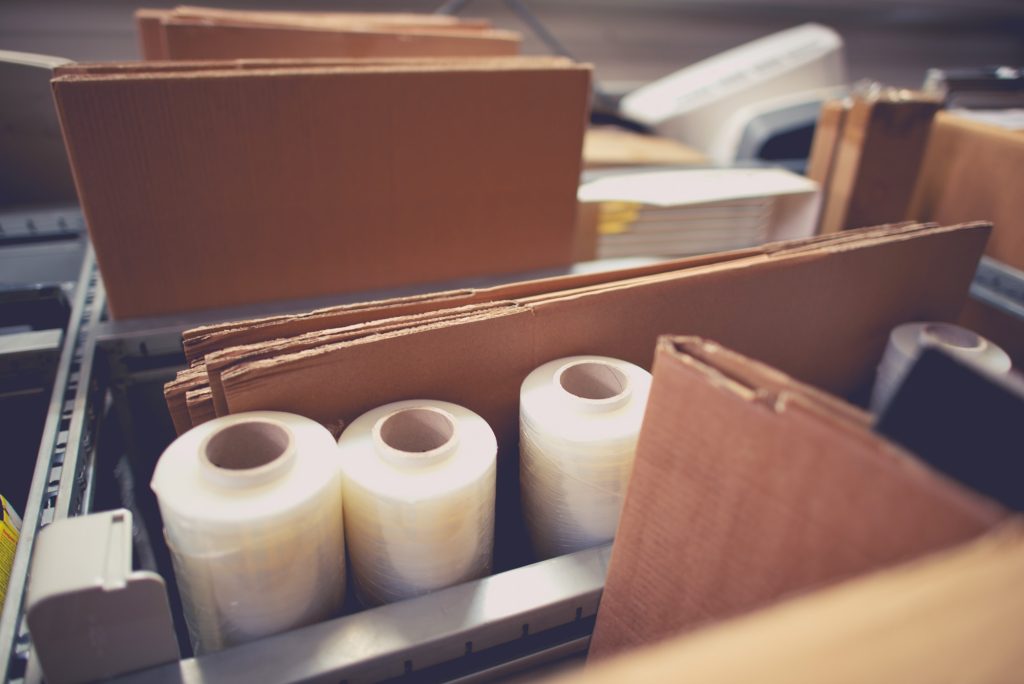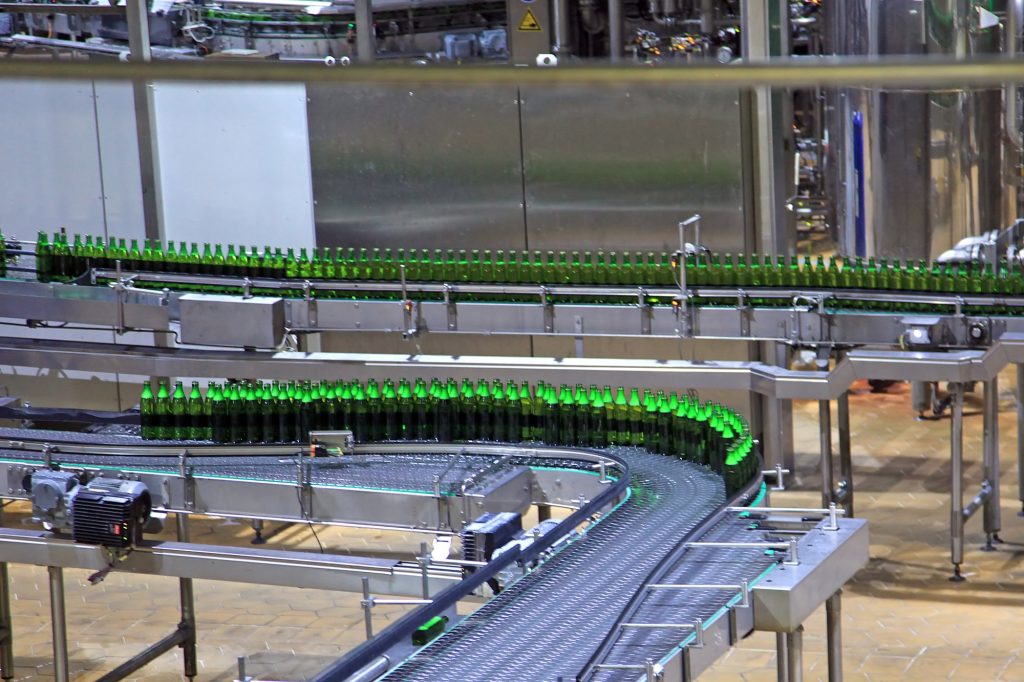Hey there! Welcome to Welpac Packaging Company, your go-to source for cost-effective packaging options and affordable packaging solutions. We understand the importance of optimizing packaging for both your bottom line and the environment. That’s why we’re here to guide you through strategies, statistics, and innovations that will help your business achieve the perfect balance between efficient shipping and reduced environmental impact.
By focusing on cost-effective packaging options, you not only save costs but also enhance your reputation as an environmentally conscious brand. At Welpac, we believe in the power of sustainable practices and their positive impact on your business and the planet.
Key Takeaways:
- Optimizing packaging reduces costs, enhances your reputation, and minimizes environmental impact.
- Right-sized packaging and sustainable materials are key trends in cost-effective packaging.
- Packaging audits, software, and smart design help achieve optimization.
- Reusable and on-demand packaging are effective long-term cost-saving solutions.
- Transitioning to sustainable packaging practices builds a positive brand image in a sustainable marketplace.

The Importance of Packaging Optimization for Cost Savings and Sustainability
When it comes to shipping products, packaging optimization is key for both cost savings and sustainability. At Welpac Packaging company, we understand the significance of finding the right balance between efficient packaging and minimizing environmental impact. By optimizing packaging, businesses can achieve significant cost savings, enhance their brand image, and contribute to a greener future.
One of the primary benefits of packaging optimization is the reduction in material usage. By using the right-sized packaging, businesses can minimize the amount of material needed for each shipment, leading to cost savings and a more sustainable approach. Additionally, optimizing packaging can also reduce shipping costs, as smaller and lighter packages require less fuel for transportation.
Sustainable packaging is another crucial aspect of optimization. By adopting eco-friendly materials and design practices, businesses can reduce their carbon footprint and appeal to environmentally conscious consumers. Biodegradable packaging, for example, provides an eco-friendly alternative to traditional materials, ensuring that products are packaged in a way that minimizes harm to the environment.
By prioritizing packaging optimization, businesses can achieve cost savings while embracing sustainability. It’s a win-win situation that allows companies to reduce expenses, improve their brand reputation, and contribute to a greener future. At Welpac Packaging Company, we offer tailored packaging solutions that optimize cost-effectiveness and sustainability, ensuring that your shipments reach their destination safely and responsibly.
Benefits of Packaging Optimization:
- Cost savings through reduced material usage
- Lower shipping costs through right-sized packaging
- Appeal to environmentally conscious consumers with sustainable packaging
- Contribute to a greener future by reducing carbon footprint
Current Packaging Trends and Their Impact on Cost-effective Packaging
The packaging industry is constantly evolving, driven by emerging trends that impact cost-effective packaging solutions. By staying updated with these trends, businesses can optimize their packaging strategies to save costs and enhance sustainability. Let’s explore some of the key trends shaping the packaging landscape today. Among these trends, one noteworthy development is the rise of sustainable materials, as companies seek to reduce their environmental footprint while meeting consumer demands for eco-friendly options. Additionally, the advent of smart packaging technology allows for enhanced product interaction and traceability, ultimately improving the overall consumer experience. As businesses adapt to these changes, they also realize the personalized packaging benefits that can help them stand out in a crowded marketplace, fostering customer loyalty through tailored experiences.
Right-sized packaging
One of the prominent trends in cost-effective packaging is the adoption of right-sized packaging. This involves designing packaging that fits the dimensions of the product perfectly, minimizing wasted space and reducing material usage. Right-sized packaging not only helps cut down on packaging costs but also reduces shipping expenses by maximizing the number of products that can be shipped in a single container.
Sustainable materials
Increasing consumer awareness of environmental issues has led to a growing demand for sustainable packaging materials. Businesses are now exploring alternatives to traditional plastic packaging, such as biodegradable or compostable materials. Using sustainable materials not only reduces the environmental impact but also appeals to eco-conscious consumers, enhancing the brand’s reputation and attracting a wider customer base.
Minimalistic design
In today’s minimalist culture, packaging design has also seen a shift towards simplicity. Minimalistic packaging involves using clean, simple designs with minimal use of graphics and colors. This not only reduces printing and production costs but also appeals to consumers looking for clutter-free and aesthetically pleasing packaging. Minimalistic design can create a sense of elegance and sophistication, making the product stand out on the shelves.
On-demand packaging and packaging reusability
On-demand packaging is another trend that helps businesses optimize their packaging processes. With on-demand packaging, businesses can produce packaging materials as needed, reducing storage costs and minimizing waste. Additionally, packaging reusability is gaining popularity as a sustainable solution. Reusable packaging not only reduces costs in the long run but also aligns with consumers’ desire for eco-friendly options.
By leveraging these current packaging trends, businesses can adapt their strategies to meet the demands of cost-effective and sustainable packaging solutions. Whether it’s adopting right-sized packaging, using sustainable materials, embracing minimalistic design, or implementing on-demand packaging and reusability, staying updated and innovative in packaging practices can lead to significant cost savings and a positive impact on the environment.
| Trend | Benefits |
|---|---|
| Right-sized packaging | – Minimizes material usage – Reduces shipping costs – Maximizes container space utilization |
| Sustainable materials | – Appeals to eco-conscious consumers – Enhances brand reputation – Reduces environmental impact |
| Minimalistic design | – Reduces production costs – Attracts minimalist consumers – Creates an elegant and sophisticated brand image |
| On-demand packaging and packaging reusability | – Reduces storage costs – Minimizes waste – Aligns with sustainability goals |

Optimization Tricks for Cost-Effective and Eco-Friendly Shipments
At Welpac Packaging company, we understand the importance of optimizing packaging for cost-effectiveness and sustainability. By implementing a range of tricks and strategies, businesses can achieve both economic savings and a reduced environmental impact. Let’s explore some key optimization techniques that can help you streamline your packaging process.
Packaging Audit
Conducting a packaging audit is the first step towards optimizing your packaging strategy. This involves assessing your current packaging materials, dimensions, and design to identify areas for improvement. By analyzing your packaging process, you can identify opportunities to reduce material waste, minimize shipping costs, and improve overall efficiency.
Investing in Packaging Software
Packaging software can be a game-changer when it comes to optimizing your packaging process. This technology enables you to right-size your packages, ensuring that you use the minimal amount of packaging material required to protect your products. By eliminating unnecessary waste, you can reduce costs and enhance sustainability. Packaging software also helps you automate and streamline your packaging workflow, saving time and improving overall productivity.
Choosing Sustainable Materials
One of the most effective ways to achieve cost-effective and eco-friendly shipments is by choosing sustainable materials. Consider using biodegradable or recyclable packaging materials that have a lower environmental impact compared to traditional options. Sustainable packaging not only aligns with consumer preferences but also contributes to your brand’s reputation as a responsible and environmentally conscious business.
Implementing Smart Packaging Design
Smart packaging design is another optimization trick that can help reduce costs and enhance presentation. By designing packaging that is efficient, compact, and visually appealing, you can minimize material usage and shipping costs while still creating an attractive product presentation. Smart packaging design also allows for efficient stacking and storage, reducing the need for additional space and minimizing waste in your supply chain.
Embracing Reusable and On-Demand Packaging
Reusability and on-demand packaging offer significant cost-saving opportunities. By implementing reusable packaging solutions, such as durable containers or pallets, you can eliminate the need for single-use materials and reduce long-term packaging costs. On-demand packaging, where packaging materials are created as needed, can also help optimize your supply chain and minimize storage space requirements.
In summary, optimizing your packaging for cost-effectiveness and sustainability requires a combination of strategies and techniques. Conducting a packaging audit, investing in packaging software, choosing sustainable materials, implementing smart packaging design, and embracing reusable and on-demand packaging are key steps towards achieving these goals. By monitoring and adapting your packaging strategies, you can ensure ongoing cost-effectiveness and contribute to a more eco-friendly future.
Conclusion: Shaping a Responsible and Eco-Conscious Future with Cost-Effective Packaging
At Welpac Packaging company, we firmly believe that the future of packaging lies in sustainability and cost-effectiveness. As businesses strive to meet consumer expectations and minimize their environmental impact, transitioning to sustainable packaging solutions is no longer an option – it’s a necessity.
By embracing sustainable packaging materials, businesses can make a significant difference in their environmental footprint. From biodegradable alternatives to recyclable options, there are numerous examples of sustainable packaging materials that can be utilized. These materials not only reduce waste but also resonate with eco-conscious consumers, helping businesses build a positive brand image.
Technology also plays a crucial role in streamlining packaging processes. From automated systems that optimize package sizes to sophisticated monitoring tools, technology can help businesses achieve cost-effective packaging without compromising on sustainability. By leveraging these advancements, companies can find the perfect balance between efficiency and eco-friendliness.
However, transitioning to sustainable packaging does come with its fair share of challenges. From cost considerations to supply chain complexities, businesses must carefully plan and strategize their transition. It requires a comprehensive understanding of the market, collaboration with experts, and a willingness to adapt. But with careful planning and execution, the rewards far outweigh the challenges.
As we move forward, it’s crucial for businesses to recognize the importance of cost-effective and sustainable packaging. By making the transition, not only can they contribute to a responsible and eco-conscious future, but they can also benefit from enhanced brand image, reduced costs, and increased customer loyalty. Together, let’s shape a better tomorrow through sustainable packaging practices.
FAQ
What are some cost-effective packaging options?
Cost-effective packaging options include right-sized packaging, minimalistic design, and the use of sustainable materials.
How does packaging optimization contribute to cost savings and sustainability?
Packaging optimization reduces material usage, lowers shipping costs, and minimizes waste management expenses, leading to cost savings and a reduced environmental footprint.
What are the current packaging trends that impact cost-effective packaging?
Current packaging trends include right-sized packaging, sustainable materials like biodegradable packaging, minimalistic design, on-demand packaging, and packaging reusability.
What are some optimization tricks for cost-effective and eco-friendly shipments?
Optimization tricks include conducting a packaging audit to assess efficiency, investing in packaging software for right-sizing packages, choosing sustainable materials, implementing smart packaging design, embracing reusable and on-demand packaging, collaborating with packaging experts, and monitoring and adapting packaging strategies.
How can businesses transition to cost-effective and environmentally friendly packaging solutions?
Businesses can transition by utilizing specific examples of sustainable packaging materials, leveraging technology for streamlined packaging processes, and addressing challenges through careful planning and strategic implementation.
Source Links
- https://www.linkedin.com/pulse/how-optimize-packaging-cost-effective-eco-friendly-shipments-6va3f
- https://www.polybags.com/3-sustainable-and-cost-effective-packaging-solutions/
- https://convercon.com/cost-effective-strategies-for-transitioning-to-sustainable-packaging-a-guide-for-modern-enterprises/

